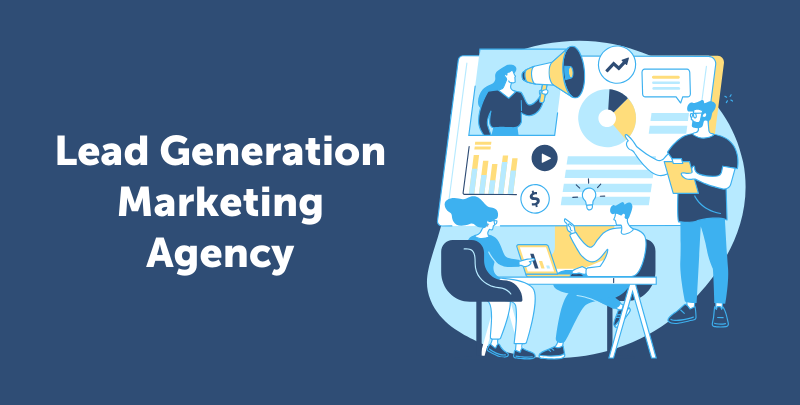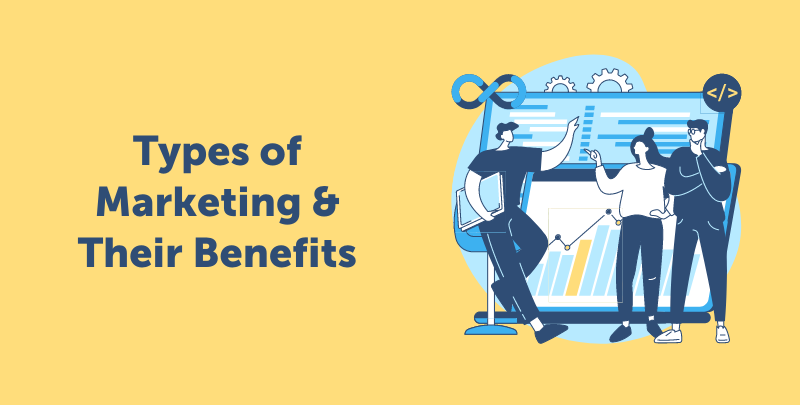Get all our templates, tips, and fresh content so you can run effective, profitable, low-stress projects in your agency or team.
Marketing used to be a lot more simple…and a lot more limited.
Businesses previously relied on billboards, TV, and radio for their marketing, reaching a limited number of consumers. Enter digital marketing, and now the sky’s the limit. A business in China can reach a vast U.S. audience in just a few clicks, and anyone, anywhere, can view ads from businesses around the world.
If this is your first foray into the digital marketing world, you’re likely overwhelmed by all the different methods, techniques, and options out there - digital marketing is huge. That’s why we’ve written this blog, so you can learn exactly what digital marketing is and how to apply it to your business.
Credit: Freepik
What is lead generation in digital marketing?
Lead generation in digital marketing is the process of attracting, identifying, and converting online consumers into customers.
Let’s break that down:
How do you attract potential customers?
I’ll be perfectly honest. Unless you’re selling something that no one, or hardly anyone else, is, this is a tough job. The internet is swamped, and you need a top-notch strategy to cut through the noise.
So, how do you attract your ideal customer before your competitors do?
- First of all, know your USP (unique selling point): Say you sell dining room chairs. What sets you apart from the competition? Maybe your chairs have been tested and proven to minimize backache. Maybe they’re made out of cherry tree wood. Whatever it is, that is what should jump out at people browsing your website/social media/blog.
- Organic search: This is crucial. The most common way people look for products is by browsing the Internet. If your website and blog posts are optimized to land high in SERP (search engine results page), you’ve obviously got a huge advantage over competitors. Browsers aren’t likely to search through all result pages; they’ll go for one of the top results.
- Paid ads: You can buy Google ads, pay-per-click ads, and social media ads to get in front of your ideal clients.
- Solve problems in public: This is another fabulous way of gaining publicity. Marketing and networking events, podcasts, and webinars are all great ways to show prospective clients that you can be trusted and can provide value.
Okay, so say you’ve put some of these strategies into place, and maybe some of them have even led to direct purchases. Often though, people will check out your website or blog and not make an immediate purchase. They’re interested in you but not quite ready to take the leap and buy from you. The next step is to nurture these prospective leads by building trust. But before you can nurture them, you need to identify who they are. Which brings us to the next question:
How do you identify potential customers?
There are two basic ways of doing this.
- Using analytical software, you figure out who’s been browsing your website and even who’s been googling your product.
- Have a freebie or an option to sign up to your blog on your website that requires the browser to enter their email address. A freebie can be anything your prospective customer would find useful, for example, an e-book or a template.
You can then curate email lists, which leads to conversions. Sending insightful, interesting emails that prove you to be an expert in your field builds trust and familiarity with your brand. Then, when they are ready to buy, your prospective clients are very likely to choose you.
Another way to build credibility and drive conversions is by figuring out what social media platforms your prospective clients are hanging out on and consistently showing up there.
With this information in the background, let’s talk about the sales funnel.
What is the sales funnel, and how does it apply to marketing?
Credit: Freepik
The shape of the sales funnel is based on the fact that not everyone who comes across your business is going to buy. Your sales process filters out any irrelevant leads but at the same time, the stronger your sales funnel, the more leads will go all the way through to the bottom of the funnel.
Your marketing needs to match the level your clients are at in the funnel. For example, you would send an email notifying customers towards the bottom of the funnel about a new product you’ve just launched, but you wouldn’t send that to someone who’s never heard of your brand before.
Let’s break down the marketing funnel from top to bottom:
- At the top of the funnel are those who show any interest in your brand. Perhaps they clicked on your website or saw your ad.
- In the next level, and slightly narrower part of the funnel, are those who go on to actually consider buying your product. These would be people who could do with what you're selling. The only question at this point is will they buy from you or your competitors? You’ll want to be nurturing people at this stage of the funnel with email sequences and targeted social media ads.
- Next is the purchasing stage. You’ve warmed up your prospective leads enough for them to buy.
- The final stage is retention and advocacy. In this stage, your goal is to keep up with your clients so that they will buy from you again. Additionally, staying on top of your customer’s minds and continuing to benefit them with valuable content/freebies will lead to more conversions. This is because your clients will feel loyalty towards your brand and recommend you to others.
Best practices for managing leads
Now that we’ve discussed how to generate leads in digital marketing let’s talk about the best way to manage leads once you’ve got them.
- Store information in one place: Once you have a lead’s email address (or any other contact information), store it in a CRM software so that a)information doesn’t get lost, b)all team members can access it, and c)you can easily create marketing resources like email lists.
- Clean data lists: If you’re going to use your data to make decisions, you want to make sure that data is reliable. This means cleaning up your lists of leads every so often so that your data represents fact. Over the course of time, people may have unsubscribed from your blog/stopped opening your emails/stopped attending your webinars and you need to update this in your CRM system. When it comes to email lists, it’s important to take note of who has not opened your emails over a period of time and remove them from your list. This is because Google may start labeling your emails as spam if it notices that they have a very low open rate.
- Use a variety of lead capture methods: As the saying goes, don’t put all your eggs into one basket. Don’t rely on one method for all your leads as that method could fail and then you’ll be left with nothing. The wider you spread your net, the more fish you’re likely to catch.
Credit: Freepik
- Make it easy for people to sign up: When requesting contact information, make it super easy for people to comply. Minimize the amount of input fields and ensure there’s plenty of white space.
- Segment leads: As we mentioned above, different leads are at different stages of the sales funnel, and you’ll be sending tailored messaging to each. Therefore, it’s important to group your leads according to the messaging that best suits them.
- Protect your data: It is only legal to store people’s data if they give their consent. Make sure you store data in accordance with data protection laws.
- Score your leads: Advanced CRM software can score your leads according to how much they are engaging with your company and, therefore, how likely they are to buy. You can use lead scoring to determine which leads are worth following up with.
How can Workamajig help you capture more leads?
With Workamajig’s advanced CRM & Sales software, you can:
- Easily convert leads into contact & company records with full conversation history
- Get full pipeline visibility & see opportunities by stage, status & probability to close
- Set goals for the team & track performance against target revenue
- Easily move a contact through your entire sales workflow, from start to finish.
- Send estimates from your project templates, or create one from scratch, including hours, labor, expenses & more
- Get approval, create a live project, and have everything ready for the project manager
- ... all from Workamajig's sales dashboard.
Related Posts


